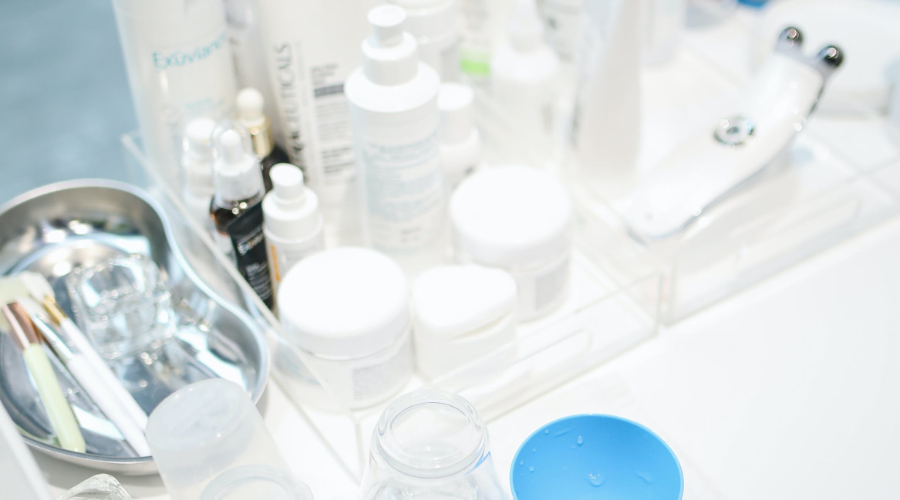The 411 on Facial Hair: Causes, Solutions, and Maintaining Smooth Skin, Featuring Hair Reduction Oil

You’ve been dealing with the extra facial hair for a while now, and you’re ready to get to the bottom of it. You may have heard of hair reduction oil, and it’s piqued your interest. Tired of constantly plucking and shaving, you want real solutions.
Believe it or not, you’re not alone. Many women face the same battle with excess hair growth. While it can feel embarrassing and frustrating, there are ways to manage it and reclaim your smooth skin. In this article, we’ll explore the most common causes of female facial hair, look at both temporary and long-term treatment options, and provide tips on how to keep your complexion stubble-free. Get ready to say goodbye to those stubborn hairs and hello to the clear complexion you deserve.
Understanding Facial Hair: Why It Happens and Common Causes
Excess facial hair on women, known as Hirsutism, can occur for several reasons. The most common cause is genetics - if your mother or grandmother had unwanted facial or body hair, you may have inherited the tendency. Certain medical conditions like polycystic ovary syndrome (PCOS) can also lead to excessive hair growth due to hormonal imbalances.
- Hormonal imbalances, especially excess male hormones like testosterone, are a frequent culprit. Conditions like PCOS, Cushing's syndrome, and adrenal gland disorders can all trigger an increase in testosterone, promoting hair growth.
- Medications you're taking may have Hirsutism or excess hair as a side effect. Drugs like cyclosporine, minoxidil, and diazoxide can stimulate hair follicles. Talk to your doctor about alternative medications or dosages if you notice significant hair growth.
- Rare disorders like congenital adrenal hyperplasia can also cause hirsutism by increasing male hormone levels before birth. See an endocrinologist for diagnosis and treatment.
The key is determining the underlying cause of your unwanted hair growth. Talk to your gynecologist or dermatologist - they can check your hormone levels with blood tests and may recommend additional screening based on your medical history and symptoms.

Methods for Temporary Hair Removal and Management
Razors and laser hair removal treatments can be expensive, time-consuming, and may cause irritation for some. Luckily, there are a few temporary methods you can try to keep facial hair at bay on the daily.
Depilatory Creams
Hair removal creams, like Nair, contain chemicals that break down hair proteins to weaken follicles so you can simply wipe hair away. Apply as directed, wait a few minutes, then rinse off. These creams can irritate sensitive skin, so do a patch test first and avoid broken or irritated skin.
Tweezing
If you only have a few stray hairs, tweezing is a quick fix. Sterilize tweezers with alcohol and grasp hairs at the root to pull in the direction of growth. Tweezing does hurt, but the pain is temporary. Be very careful not to break hairs, as they may become ingrown.
Threading
Threading uses a twisted cotton thread to grab multiple hairs at once and swiftly pull them from the roots. See a professional threader to learn the proper technique. Threading causes some discomfort, but results can last 2-4 weeks.
Waxing
Waxing involves applying melted wax to hair and fabric strips to quickly remove large sections of hair. Do-it-yourself waxing kits are available, but for faces, see a professional esthetician. Waxing stings, but hair takes longer to regrow. Redness and irritation are common but temporary side effects.
With some trial and error, you can find a method that effectively and affordably manages your facial hair with minimal fuss or discomfort. Don't get discouraged - there are many options and what works for one person may not suit another.
Facial Hair Reduction Oil
Using specially formulated facial hair reduction oils can help slow and minimize hair growth over time. The oils also have soothing, anti-inflammatory properties to calm the skin.
For the best results, apply the oil 2 times per day, directly to the areas of unwanted hair growth. Gently massage into your skin using small circular motions until fully absorbed. The oil can take 4 to 6 weeks of regular use to start noticeably reducing hair growth, so patience and consistency are key.
To maintain results, continue using the facial hair reduction oil 2 times a day. You should also adopt an ongoing hair removal routine, such as waxing, tweezing or threading for the most hair-free skin. Exfoliating 1-2 times a week will remove dead skin cells and unclog hair follicles, allowing the oils to better absorb.
Using natural facial hair reduction oils, along with other hair removal methods, can help you achieve and keep the smooth, hair-free skin you want. With regular use, many women experience significant reductions in facial hair growth over 3 to 6 months. Stay dedicated and don't get discouraged – it can take time, but the results will be worth it!
Once you’ve removed unwanted facial hair, it’s important to establish a routine to prevent regrowth and keep your skin smooth. Here are some tips to help you maintain a hair-free face:
- Moisturize daily. Apply a fragrance-free moisturizer daily, especially right after hair removal. This will hydrate your skin and prevent ingrown hairs.
- Exfoliate regularly. Gently exfoliate the area 1-2 times a week to remove dead skin cells. Use a facial scrub, chemical exfoliant like glycolic acid, or facial brush. This will unclog hair follicles and prevent ingrown hairs.
- Avoid sun exposure. Too much sun can stimulate hair growth and cause pigmentation issues. Wear broad-spectrum sunscreen with SPF 30 or higher and limit the time you spend in the sun.
- Review medications. Certain medications like steroids, cyclosporine, and minoxidil can stimulate hair growth. Talk to your doctor about alternative medications or dosages if you notice excess hair growth from a medication.
By sticking to a consistent hair removal routine and making lifestyle changes that support hair-free skin, you'll be well on your way to smooth, stubble-free skin. Staying patient and consistent is key. With time, you may find that unwanted hair grows back thinner and lighter, if at all.
So there you have it, ladies. Dealing with excess facial hair can be a real pain - literally and figuratively. But you're not alone in this, and there are solutions to get it under control. Sure, it might take some trial and error to find what works best for your unique situation. But don't get discouraged. With a combination of temporary removal techniques and long-term treatment plans, you can kiss those stubbles goodbye. Remember to exfoliate and moisturize to keep your skin smooth. And consult your doc to get to the root of what's causing the hair growth in the first place. You got this! With a little time and TLC, you'll be rockin' a soft and smooth face in no time.





